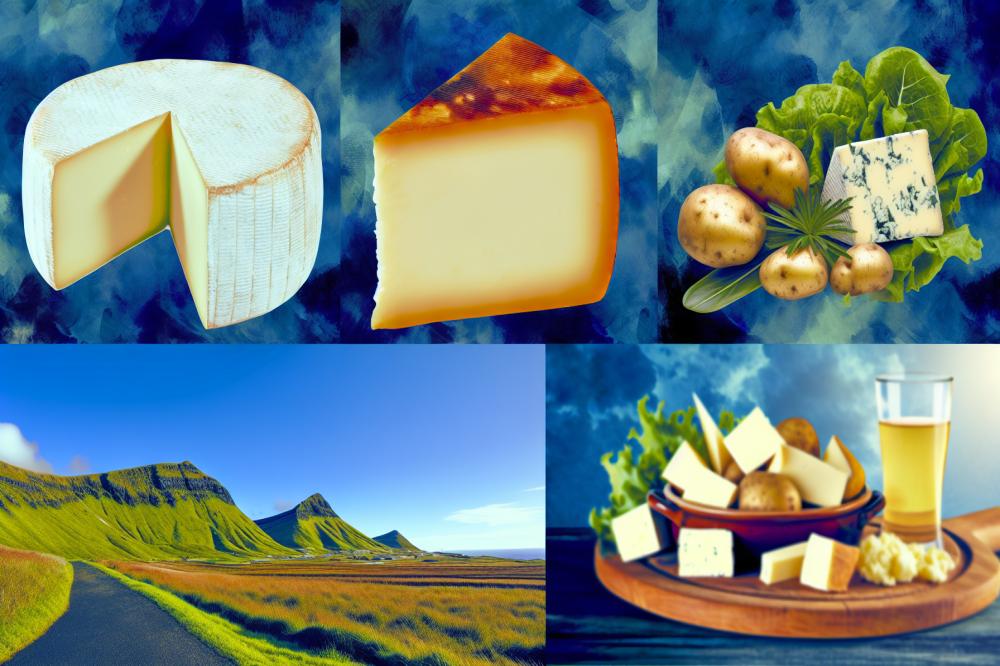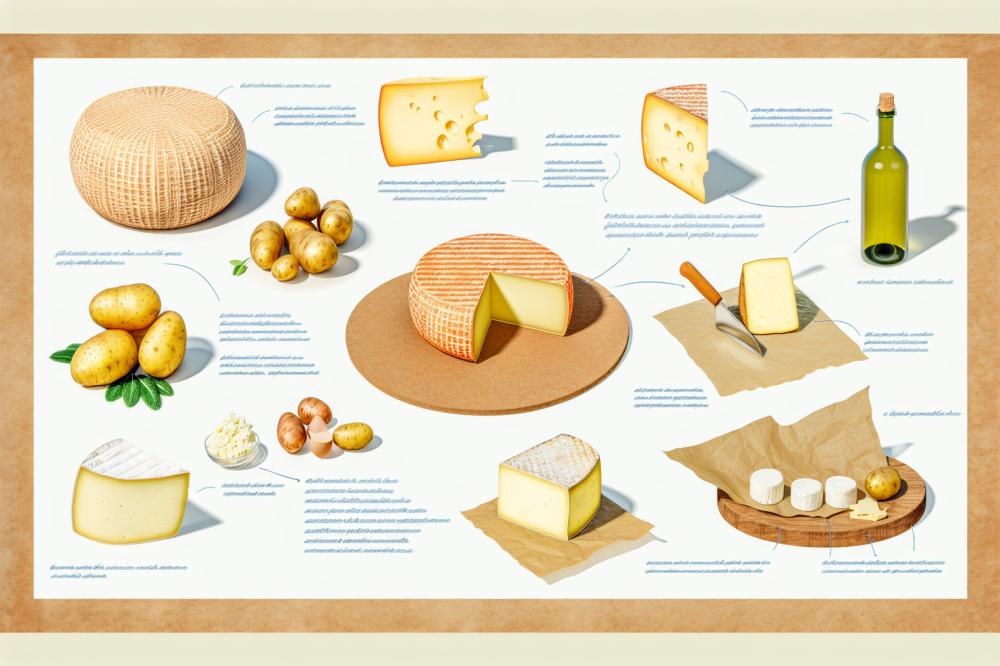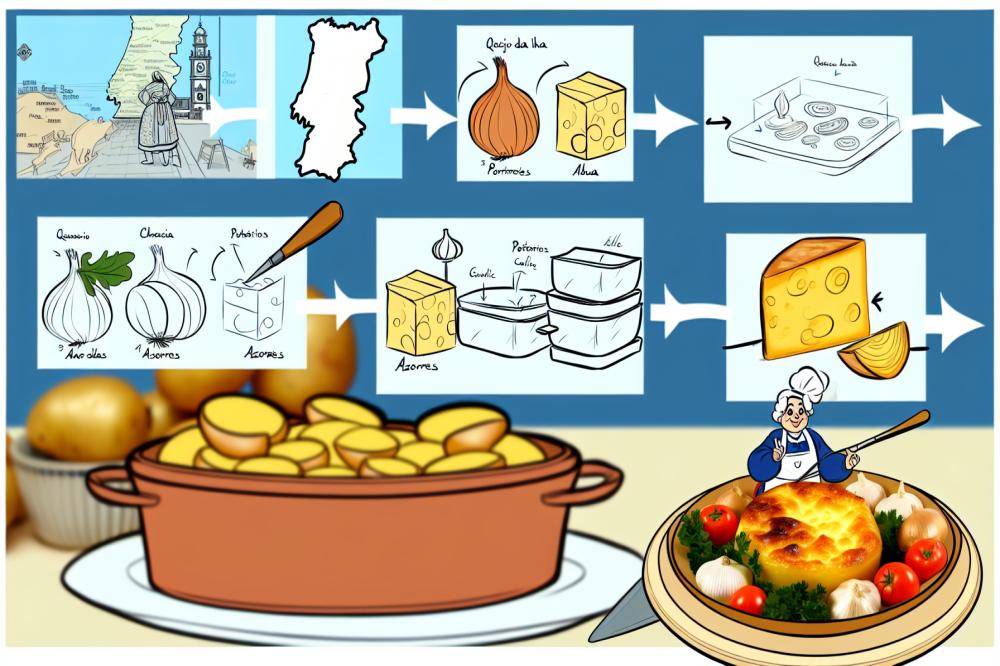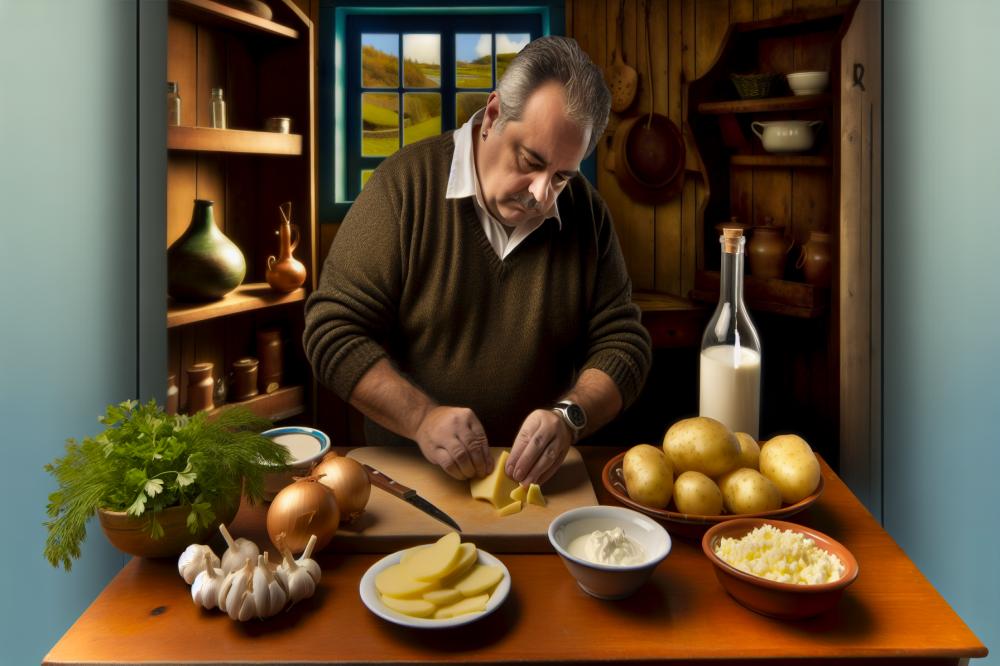The Creamy Indulgence of Queijo da Ilha from the Azores
Portugal is famous for its rich cheese culture. Across the country, artisans craft a wide variety of cheeses. Each region offers its own distinctive flavors and textures. Among these, some are more renowned than others. The cheeses of Portugal tell stories of history, tradition, and local ingredients. They reflect the diverse landscapes and climates found throughout the land.
One cheese that stands out is Queijo da Ilha. This creamy delight comes from the beautiful Azores archipelago. Its significance goes beyond just taste; it represents the agricultural heritage of the islands. The unique flavors derive from the lush pastures where the cows roam. It is a cheese that captures the essence of its environment, making it a point of pride for local producers.
The Azores play a crucial role in cheese production within Portugal. This region, with its volcanic soil and mild climate, contributes to the remarkable quality of dairy products. Farms on these islands are often family-owned, allowing traditional methods to flourish. Locals take great pride in their craft, ensuring that each wheel of cheese boasts impeccable quality. As interest in artisanal products grows, Azores cheese gains recognition on a larger scale.
In essence, Queijo da Ilha is more than just a food item. It symbolizes the heart and soul of the Azores. Tasting this cheese offers a true glimpse into a delightful culinary world. For cheese lovers and newcomers alike, exploring its creamy texture and rich flavor is a journey worth taking.
Queijo da Ilha

Queijo da Ilha, a beloved cheese from the Azores, captures the essence of island life. Often described as semi-hard, it offers a unique blend of flavors. Made primarily from cow’s milk, this cheese showcases a creamy texture that many find irresistible. The surface typically displays a natural rind that hints at the richness inside.
History and Origin
The origins of this cheese trace back to the early Portuguese settlers in the Azores. Since the 15th century, local farmers have crafted this traditional delicacy. The isolation of the islands played a significant role in shaping its production methods. Over the centuries, this cheese evolved, reflecting both local ingredients and ancient techniques.
Characteristics: Flavor, Texture, and Color
Flavors range from mild to robust, often depending on the aging process. Young varieties may taste creamy and slightly nutty, while older versions can develop a sharper profile. The firm texture makes it ideal for slicing. Color varies from pale yellow to a deeper hue, especially in aged cheeses. These traits make it versatile for different culinary uses.
Traditional Production Methods
Crafting this cheese involves a meticulous process that honors tradition. Farmers start by collecting fresh milk from local dairies. Then, they curdle the milk using natural rennet. After that, the curds are cut and heated, allowing whey to escape. Next, the cheese is molded and pressed, preparing it for aging. This crucial step can last anywhere from several months to over a year, influencing both taste and texture.
Azores cheese

The Azores, an archipelago in the Atlantic, is known for its diverse cheese offerings. Among these are several varieties, each providing a snapshot of local culture. The most famous include Queijo do Pico and Queijo São Jorge. Each cheese has its own personality, shaped by the island’s unique environment. This variety reflects the different islands and their individual characteristics.
Local ingredients play a significant role in the flavors of these cheeses. Rich volcanic soil nurtures pastures filled with diverse grasses and wildflowers. Cows in the Azores graze on this lush vegetation, and their milk captures the taste of the landscape. The climate, with its cool temperatures and ample humidity, also contributes to the development of flavor. These natural factors combine to create cheese with a depth that is hard to replicate elsewhere.
While Queijo da Ilha stands out with its smooth texture, other cheeses from the region offer different experiences. Queijo São Jorge is known for its sharper and more pungent profile. The richness of Queijo do Pico offers a creamy delight but with a stronger aftertaste. Each variety provides distinct flavor notes, making it fun to explore the differences. Tasting these cheeses side by side reveals how geography and production methods affect taste and texture.
Cultural context plays an important part in the story of Azorean cheese. Cheese is not just food; it is woven into the fabric of local life. Family gatherings, festivals, and everyday meals often feature a cheese platter. It showcases not only cheese but also the pride of the community. Many traditional recipes highlight the importance of cheese, showcasing its versatility in various dishes. From snacks to main courses, it embodies the heart of Azorean cuisine.
Recipe: Queijo da Ilha and Potato Bake

Ingredients:
- 300g Queijo da Ilha, grated
- 500g potatoes, thinly sliced
- 1 onion, sliced
- 200ml heavy cream
- 2 cloves garlic, minced
- Salt and pepper to taste
- Fresh parsley for garnish
Instructions:
- Preheat your oven to 180°C (350°F).
- In a greased baking dish, layer half of the sliced potatoes at the bottom.
- Add half of the sliced onion and sprinkle half of the minced garlic on top.
- Season the layer with salt and pepper.
- Next, sprinkle half of the grated cheese over the layer.
- Repeat this layering process with the remaining potatoes, onions, garlic, salt, pepper, and cheese.
- Evenly pour the heavy cream over all the layers.
- Bake in the preheated oven for about 40-50 minutes, until it is golden and bubbly.
- Before serving, garnish with fresh parsley for a pop of color.
Nutritional Information:
Per serving, this dish is full of flavor. It provides a rich combination of calories, fats, proteins, and carbohydrates. Enjoy this satisfying meal in moderation.
Health Benefits:
Queijo da Ilha offers a delightful source of calcium, vital for strong bones. Potatoes provide essential vitamins, while garlic is known for its immune-boosting properties. Onions, another key ingredient, are great for heart health. Cream adds richness but should be consumed mindfully due to higher fat content. Together, these ingredients create a hearty dish that balances indulgence with nutrition.
Final Thoughts on Queijo da Ilha and Its Place in Portuguese Cuisine

Queijo da Ilha holds a special place in the heart of Portuguese cuisine. This cheese embodies the rich culinary traditions of the Azores, reflecting both the landscape and the culture of the islands. Made predominantly from cow’s milk, it offers a creamy texture that delights the palate. Every bite transports you to the lush pastures where the cows graze, infusing the cheese with its distinct personality.
Exploring the various types of Azorean cheeses can be a rewarding experience. Each artisanal cheese tells a story about its origin and craftsmanship. When you taste these cheeses, you are not just enjoying food; you are engaging with a piece of history. Local farms take pride in their traditional methods, creating flavors that cannot be replicated elsewhere. It’s worth seeking out these cheeses in local markets or specialty shops.
Incorporating this dairy delight into your everyday meals can elevate your culinary game. Picture it melting atop a warm slice of bread or adding depth to a pasta dish. The possibilities are endless when you start experimenting with different recipes. Moreover, sharing these cheeses with friends and family can spark conversations about the rich culture of the Azores and the passion that goes into producing such fine products.
Embrace the creamy indulgence that comes from Queijo da Ilha. Start with simple pairings and let your creativity flow. There is a whole world of flavors waiting for you in the realm of Azorean cheeses. Happy tasting!



